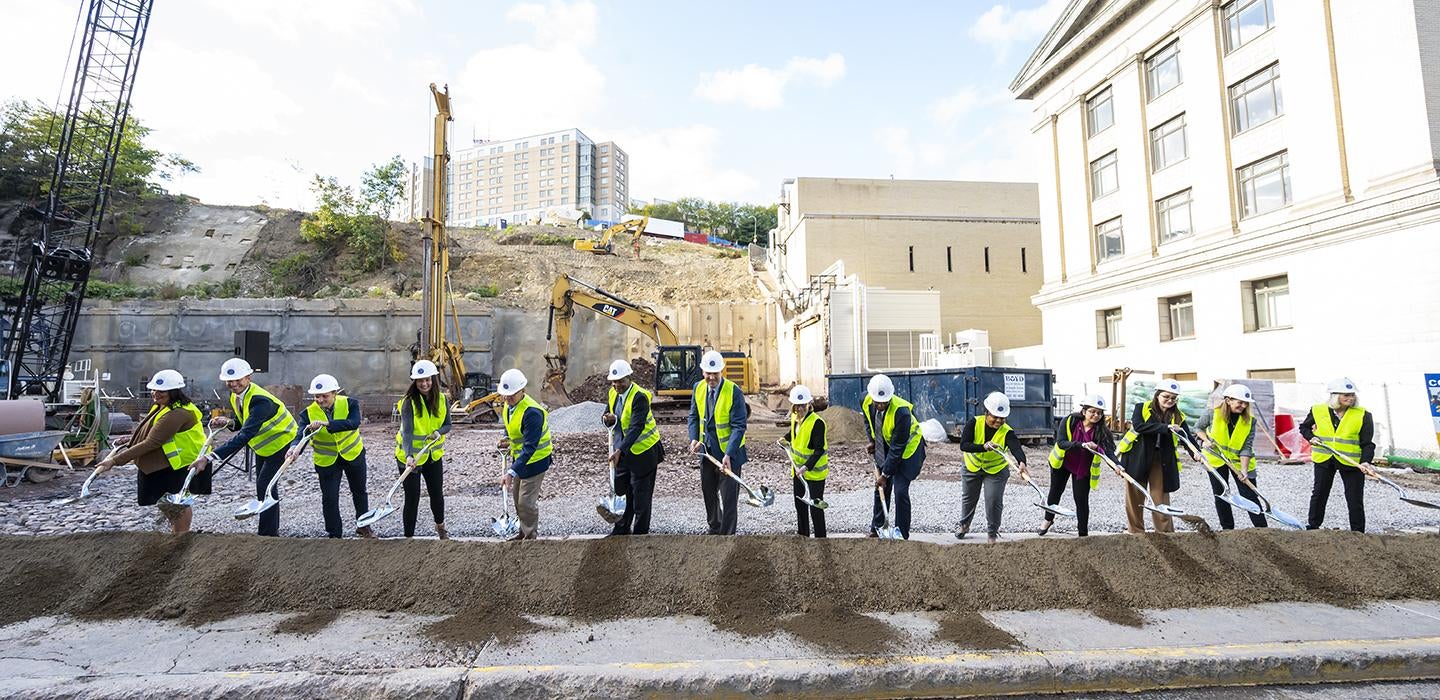
Subscribe to Pittwire Today
Get the most interesting and important stories from the University of Pittsburgh.On Sept. 29, the University of Pittsburgh broke ground on the institution’s new state-of-the-art Campus Recreation and Wellness Center. To commemorate the next phase of construction, Pitt hosted a celebration for students, faculty, staff and community members in the courtyard of Benedum Hall that featured music, food and giveaways.
Prior to the celebration, Chancellor Patrick Gallagher, Provost and Senior Vice Chancellor Ann E. Cudd, Vice Provost for Student Affairs Kenyon R. Bonner, Senior Vice Chancellor for Business and Operations David DeJong, and other University leaders took part in a smaller ceremonial groundbreaking at the active construction site, located across O’Hara Street.
They were joined by Curt Moody, founder and board chair of Moody Nolan, the architectural firm heading the project, and student and community representatives including Student Government Board President Danielle Floyd and Miguel Sague of the Council of Three Rivers American Indian Center.
Donned in business attire, reflective vests and hard hats, 14 attendees stood with shovels in the afternoon sun flanked by tractors and a crane. Following opening remarks by Associate Dean of Students for Wellness Jay Darr, and a land acknowledgment by Sague, each smiled as they raised their ceremonial shovels to kick off construction.
“This is an exciting day for the entire campus community, but for Pitt students especially,” said Gallagher. “We break ground on the Campus Recreation and Wellness Center today, because we know there's more to student achievement than what happens in the classroom. This facility is about a lively, inviting campus crossroads, where Pitt students can access just about everything that supports their success.”
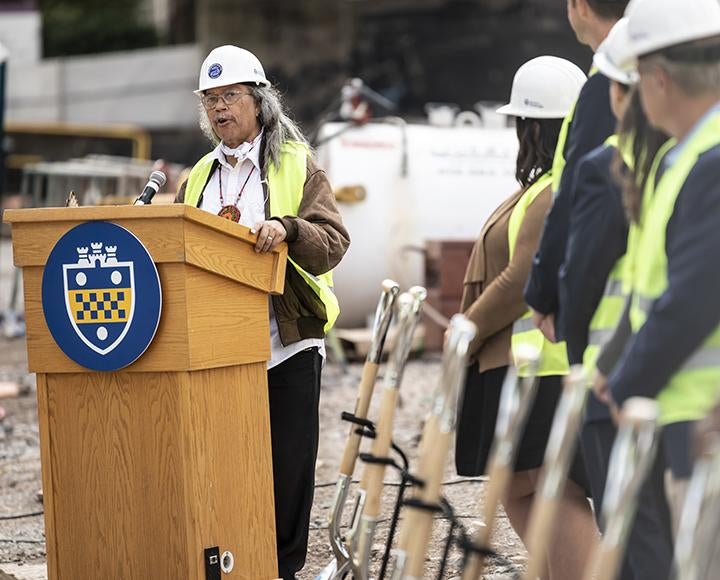
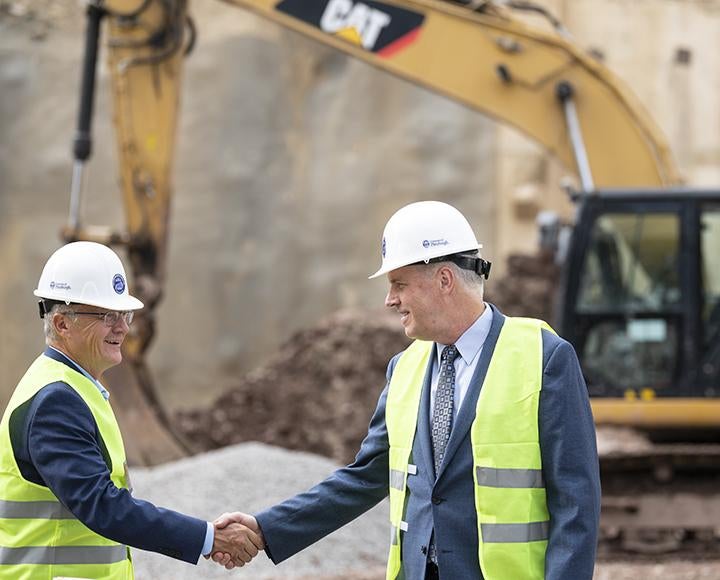
The 270,000-square-foot, multi-story facility is expected to open in the fall of 2024. It will boast cutting-edge experiences that encompass a holistic approach to health and wellness which, Gallagher said, will bolster some of the most meaningful aspects of the collegiate experience. Additionally, the new center will target LEED certification, which denotes a socially and environmentally responsible space through energy efficiencies, sustainable stormwater management, biophilic design elements and more.
“Social interaction with peers, physical activity, downtime in an environment that’s simultaneously relaxing and stimulating … student health services, counseling, accommodations for students with disabilities and more will all be here,” said Gallagher.
Conceptualization of the first-rate amenities and services were informed by the primary stakeholders — students.
“The impetus for the new center is our students’ request for a more robust, dynamic and accessible recreation facility,” said Bonner. “Throughout the design and planning process, we continued to engage and leverage our community’s perspectives, needs and ideas,” to ensure this space is “perceived and experienced as an environment in which those with diverse identities, abilities, physical attributes, beliefs, values and behaviors feel they belong.”

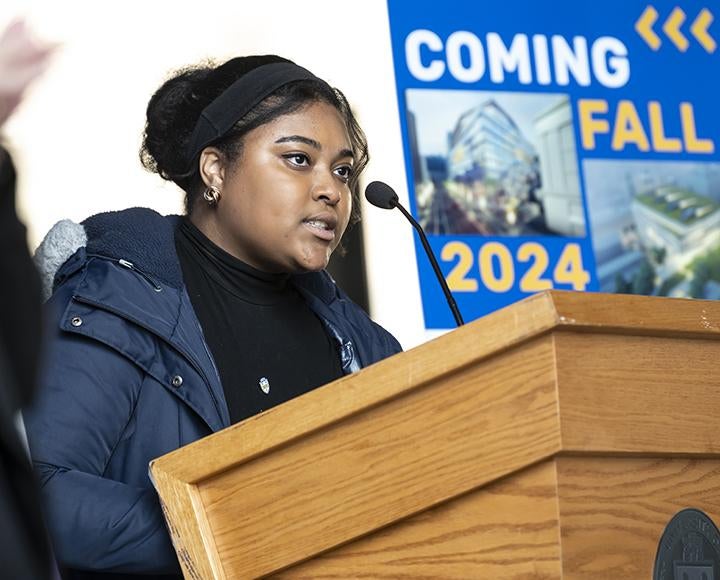
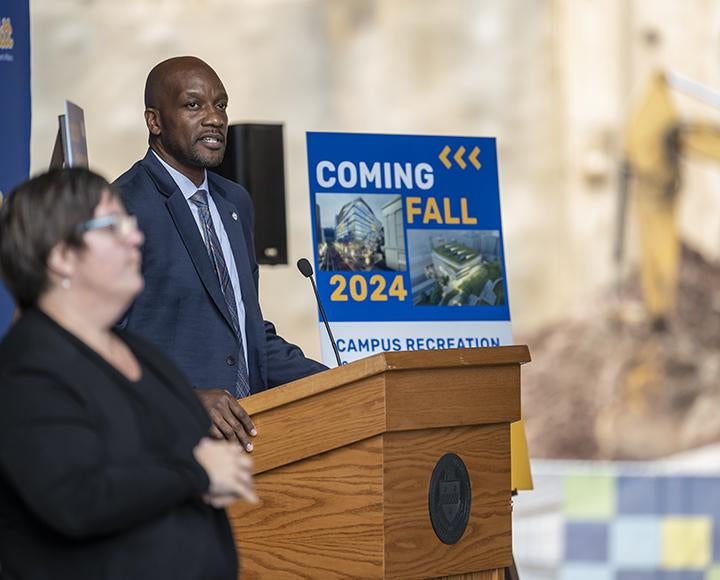
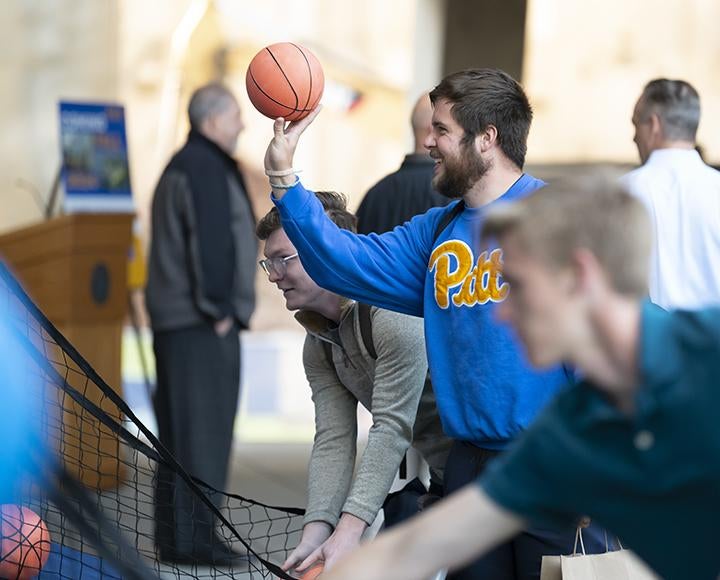
A student advisory board was formed to collect input from across campus and disciplines. Since then, students have remained an integral part of the conversation.
“The Campus Recreation and Wellness Center symbolizes a refreshed approach to holistic wellness,” said Brie Predieri, a senior exercise science major in the School of Education and native of Bucyrus, Ohio, and board member.
“In the past, not just at the University, wellness has been mostly physically centered. The new recreation and wellness center will not only aid in the physical wellness journey, but also all other parts of wellness including mental, spiritual, financial, etc. I am super excited for this change in mindset because one cannot be truly physically well if these other areas need maintenance,” she said.
The opportunity to serve as an advisory board member has felt empowering, Predieri said.
“At such a large university, it’s easy to feel like your voice is not always heard. This board is a great way for many student voices — with differing backgrounds and perspectives — to make a difference.”
Zach Rosenberg is a sophomore supply chain major from Hunterdon County, New Jersey, and an advisory board member. Serving on the board, he said, has made him feel respected and valued. He added that the groundbreaking celebration signaled progress and Pitt’s willingness to take significant steps to meet students’ needs.
Meanwhile, Kate Yunaska, a second-year physical therapy graduate student in the School of Health and Rehabilitation Sciences, from Hatfield, Pennsylvania, joked during the ceremony about future generations not getting to fully experience Cardiac Hill.
The center won’t just benefit students, though: Faculty and staff will also have access. Additionally, the facility will have a positive economic impact on communities across Pittsburgh and Pennsylvania as it’s expected to create more than 1,000 jobs during and post-construction and maximize minority and woman business enterprise participation.
“[The center] emerged from our campus-wide strategic planning process,” said Gallagher. “We knew this center would create a connection we badly needed. We know where we’re going next, and we know why. Pitt has kept its eyes fixed on the future and continued to fulfill its mission to make the world a better place through knowledge. For that, I’m grateful to everyone here today.”
Learn more and get project updates.
— Kara Henderson, photography by Aimee Obidzinski


